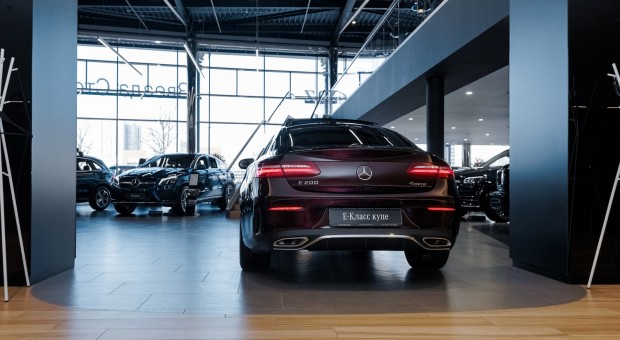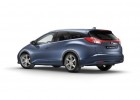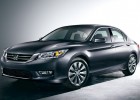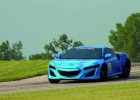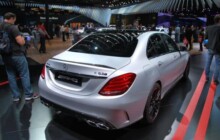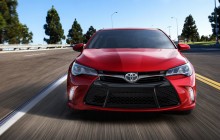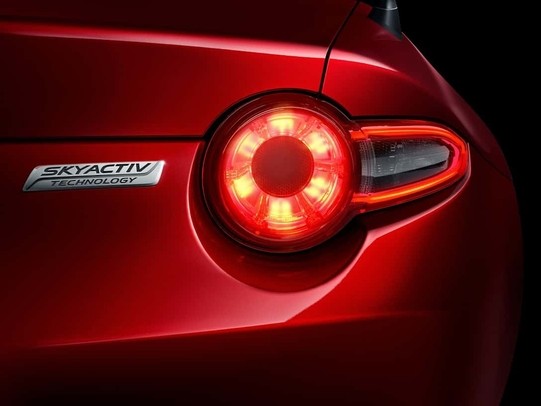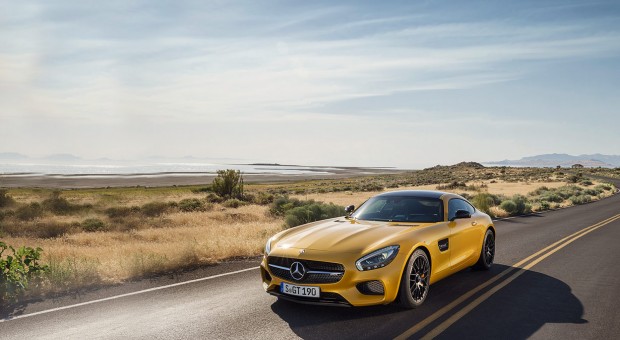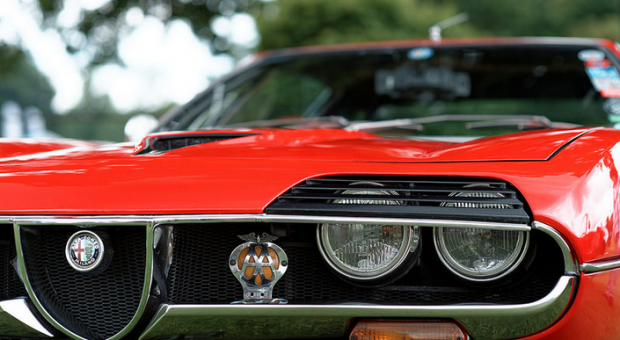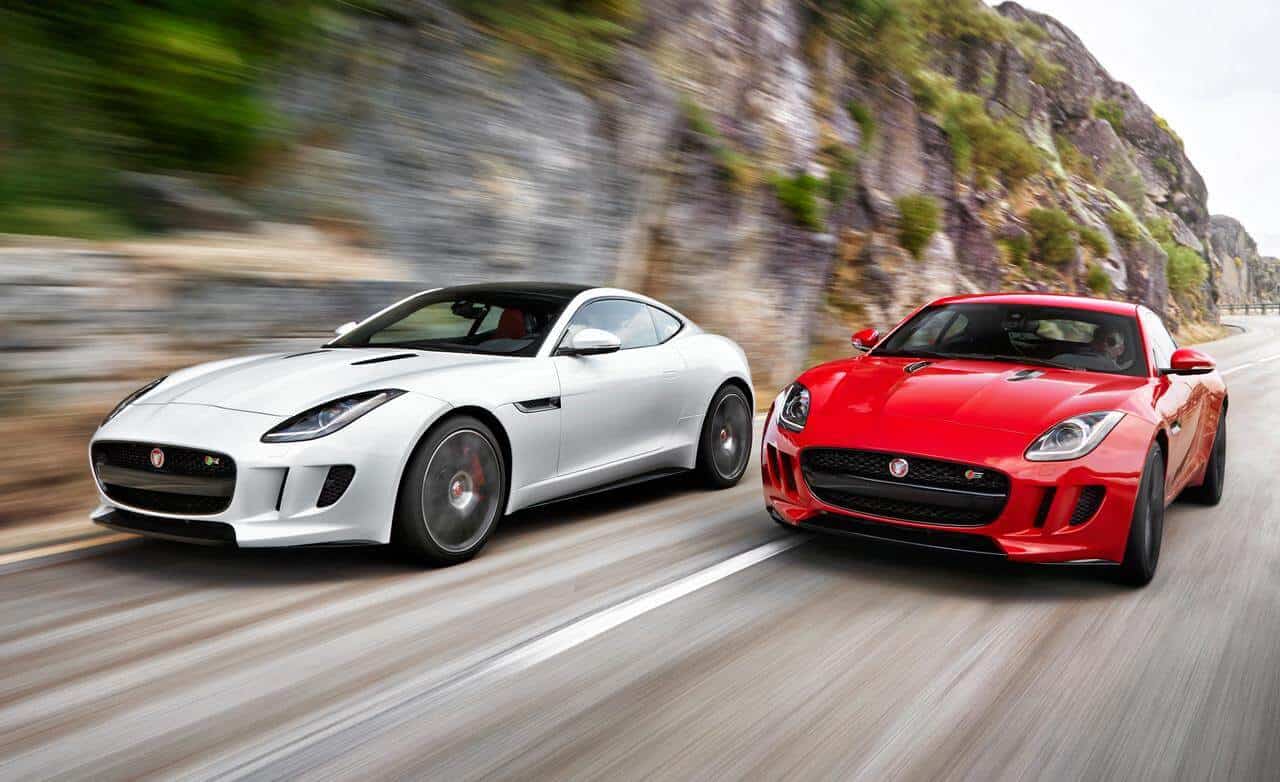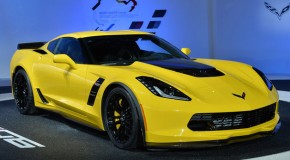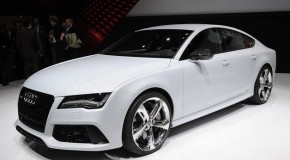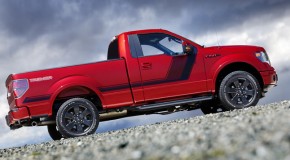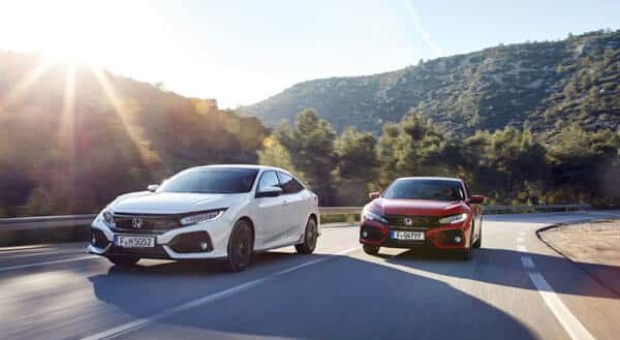
2017 Honda Civic
The all-new tenth-generation Honda Civic is a dynamic, five-door sports hatchback. It represents a significant step forward for Honda in the C-segment, benefiting from the largest single model global development programme in the company’s history.
The Civic is a core model for Honda in Europe and has been at the heart of the brand’s strong sales and manufacturing heritage in the region. For many European customers the Civic is synonymous with the Honda brand and the development team targeted a dynamic rejuvenation of Civic to place it in a league of its own.
“The creation of this tenth-generation Civic represents one of the most comprehensive and ambitious new model developments ever undertaken by Honda,” said Mitsuru Kariya, Chief Engineer and Global Project Leader. “As well as an unprecedented commitment of R&D resources, the process involved sales and manufacturing operations around the world, from North America and Japan, to Europe, South America and Asia. This car, the sportiest Civic ever, sets new benchmarks for the compact class in terms of dynamic performance, fuel efficiency, spaciousness, safety and interior quality.”
Achieving class leadership – while also meeting requirements for sales price, fuel efficiency and manufacturability – demanded new thinking and new approaches to body construction, vehicle aerodynamics and chassis design. The development team rallied around the core project slogan ‘otokomae’ to create a strong clarity of purpose. Otokamae embodies a sense of grace and elegance as well as an inner beauty.
The development team conducted extensive real-world benchmark testing, including assessment of European luxury vehicles, in setting the targets for ride, handling, steering and NVH, as well as interior quality and overall refinement.
Building on its 40-year heritage, the car stays true to the original Civic concept of “a car for all people, a car for the world”. It is a marriage of distinctive design, sporty styling and versatile practicality – with a renewed focus on rewarding driving dynamics.
The purposeful five-door hatchback silhouette makes a confident statement about the Civic’s sporty character. Wider, longer, and lower than any of its predecessors, the all-new Civic has short overhangs and taut lines that reference the high levels of aerodynamic efficiency. A sharp and aggressive ‘face’, pronounced wheel-arches and sculpted front and rear intakes hint at the Civic’s sporting character.
The all-new Civic has been engineered from the ground up to fulfil the promise of agile and rewarding dynamics. A lightweight, highly rigid bodyshell – the product of innovative new engineering and construction techniques – complements the lower centre of gravity and a sophisticated new suspension system in contributing directly to an engaging and fun driving experience.
The new wider, longer platform results in class-leading interior space. The entirely new interior features a simple, uncluttered layout, new technologies, exceptional refinement and high-grade materials. The seating position is a major change against the ninth generation car, sited lower to give the driver a greater feeling of connection with the car, enhanced by greatly improved visibility to the front of new Civic. The new Civic builds on the model’s reputation for combining unrivalled passenger and luggage space with versatile, practical usability. The second-generation of Honda’s infotainment and connectivity system incorporates Apple CarPlay and Android Auto integration.
The all-new Civic debuts two all-new VTEC TURBO gasoline engines that have been developed specifically to deliver a powerful, engaging and efficient driving experience.
The Honda SENSING suite of advanced safety and driver-assistive technologies available across the range ensures the car is among the very safest in its class.
The new Civic five-door hatchback will be built in Europe at Honda’s UK manufacturing facility and exported globally.
The concepts, approach and technologies embodied by the all-new Civic present an affirmation of Honda’s position as a sporty and advanced brand, while also confirming Honda’s commitment to Europe and the compact segment.
2. Sporty, fresh and distinctive exterior design
• Dramatic next-generation interpretation of signature Civic design
• Lower, wider and longer than previous model for a sleeker silhouette and sure-footed, muscular stance
• Class-leading aerodynamics
With an assertive new stance and advanced aerodynamics, the all-new Civic advances design into the next era. A sleek and swept back silhouette articulate a fresh and distinctive new Honda design direction that conveys a strong and sporty character. The sharp lines are complemented by the most comprehensive aerodynamic packaging in the compact segment, including complete underbody panelling.
The athletic look starts with low and wide proportions which reflect an increased footprint. The new Civic is 30 mm wider, 136 mm longer and 20 mm lower than the previous-generation model. These generous dimensions underpin the distinctive design and sporty styling, while also facilitating rewarding dynamics and increased interior space.
New larger and wider wheels and tyres further emphasise the wide stance, while the long wheelbase, short overhangs and sweeping cabin area further add to the dynamic feel of the exterior.
“What we sought to instil in the completely rejuvenated new Civic was genuine charisma,” comments Mitsuru Kariya, Chief Engineer and Global Project Leader. “While this has to come from more than the styling, the athletic external appearance must allude to the dynamic attributes and technologies that lie within.”
Sporty and sophisticated design details include a short front overhang with distinctive large air intakes for a more purposeful stature. The result is a sharp and aggressive contemporary interpretation of Honda’s family ‘face’, incorporating signature Honda front headlight clusters.
The top edge of the front light clusters meet the top of the grille at the leading edge of the bonnet to create a neat, seamless, accented strip across the full width of the car, helping to project a wide, sure-footed stance. Depending on the model grade, the thin, high-tech front lamp clusters feature either sharp high-tech LED headlights or projector halogen bulbs. All models feature LED daytime running lights that illuminate a hockey-stick shaped strip at the outer edge of the cluster.
The sleek and swept-back body contour lines continue along the flanks of the car, with a swage line which bisects front and rear door handles before culminating in the distinctive C-shaped LED rear lights.
A second, lower bodyside character line extends from the base of the front door behind the front wheel, up through the doors and meets the rear wheel arches, creating a forward-in-motion look that emphasises the car’s dynamic potential.
The aggressively sloped roofline, featuring a fin-type antenna, flows into C-pillars that extend the curvature of the roof rearward to the rear corners
Distinctive peaks at the hatchback’s roof flanks rise from the top of the C-pillars towards the top corners of the rear screen and meet the ‘floating’ roof spoiler. A second, lower tailgate spoiler incorporates the central third brake light.
The rear bumper’s sharp creases and sculpted air outlets complete a dramatic and sporty look. The overall effect is sleek, sophisticated dynamism with distinctive and thoroughly modern Civic exterior design.
The new Civic will be available in seven exterior paint finishes: solid Rallye Red, metallic Lunar Silver, Polished Metal and Brilliant Blue, and pearlescent White Orchid, Crystal Black and Sonic Grey.
Buyers of the 1.5 litre VTEC TURBO engine will be able to opt for either ‘Sport’, ‘Sport Plus’ or ‘Prestige’ grades, each of which feature exclusive exterior finishing touches. The Sport and Sport Plus grades boast more pronounced front and rear spoilers, side skirt garnish and an exclusive 17-inch alloy wheel design. They also feature LED headlights and front fog lamps, while at the rear they are marked out by centre-mounted twin exhaust pipes with chrome finishers.
The Prestige grade sees discreet sophistication added by a chrome front grille finish, chrome door handles and chrome side window surrounds.
Class-leading aerodynamics
The Civic’s development team sought to achieve the most aerodynamically efficient body in the compact class, balancing low aerodynamic drag with high-speed stability. It achieved this through careful management of airflow over and under the car to minimise lift.
The CdA – the combination of coefficient of drag (Cd) and frontal area (A) – is improved by 3 percent over the outgoing Civic to best-in-class levels, based on Honda internal test data.
Advanced designs for the A-pillar and front and rear bumpers minimise disturbance of the passing air and the front grille is shaped to reduce engine cooling air losses. Under-engine and under-floor covers provide an almost entirely flat vehicle underside, while lateral strakes located ahead of each wheel-arch help deflect airflow around the tyres. These measures contribute to airflow efficiency and reduce the aerodynamic drag and Honda’s engineers developed a wheel design which results in a further four percent reduction.
The short front overhang also contributes to improved aerodynamic efficiency, while stamped steel exhaust silencers are aerodynamically shaped and eliminate the need for an additional underside cover at the rear of the vehicle.
The flush-mounted windscreen and side window glass and minimised panel gaps further improve aerodynamic performance.
The lower tailgate spoiler plays an important role in managing the flow of the air departing the rear of the car. It is specifically designed, with precisely configured width and height, to create a clean air stream by reducing the turbulence behind the car, increasing the Civic’s aerodynamic efficiency.
3. Newly engineered from the ground up, the all-new platform was developed for an engaging and dynamic driving experience
• New Civic is the result of the largest single model development programme in Honda’s history
• The most engaging and fun Civic driving experience ever
• Lower, more sporty driving position
• New suspension setup delivers exceptional handling and ride comfort
• Advanced NVH management delivers class-leading interior refinement
Recognising that customers in the all-new Civic’s target global markets now expect European standards of quality, refinement and dynamic performance, the Civic development team planned Honda’s biggest ever single model engineering programme to create an entirely new car from the ground up.
The objective was to realise a dynamic rejuvenation of the Civic that would make it competitive with the best in the segment. From the earliest stage of platform development, the engineering team benchmarked the world’s best compact-class cars, including those from leading European premium brands. This evaluation process ultimately served to define the new Civic’s targets in ride, handling, steering and NVH, as well as interior quality and overall refinement.
“From the very first stages, we defined our number-one objective for this new Civic as the creation of soulful performance,” said Mitsuru Kariya, Chief Engineer and Global Project Leader. “Dynamic performance targets were set and achieved through an exhaustive, gruelling regime of testing and development. The result is a platform that provides both superior driving stability and refinement, as well as a confidence-building, low-slung driving position.”
Despite the ambitious engineering programme, the new Civic still meets the requirements of “a car for all people, a car for the world” by retaining its position as an affordable compact car in terms of cost, fuel efficiency and manufacturability. As such, the development process demanded new thinking and new approaches to body construction, aerodynamics, powertrain and chassis design.
The global programme – unprecedented in its scale for Honda – incorporated the five-door, four-door, coupe and Type R variants as part of a single development project that aimed to exceed benchmark European quality and performance standards.
Development of the five-door Civic for Europe was carried out through extensive on-road testing across Germany and UK.
Advanced new unibody platform
The new platform’s design, the selection of materials, the engineering process, and novel manufacturing techniques have been key to creating a lighter, significantly more rigid structure. It is 16 kg lighter than that of the previous generation Civic, while exhibiting 52 percent greater torsional stiffness. The improvements in rigidity and the design of the unibody contributed significant improvements to NVH characteristics.
Significant platform design features include front and rear bulkhead ‘rings’ that encircle the entire interior cabin space. Further platform rigidity is provided by a low-sensitivity front-floor structure, including cross braces in front of the engine bay and between the bases of the A- and B-pillars.
The lightweight, high tensile materials employed across thestructure improve body rigidity and crush safety. Hot stamped steel was applied to a wider area, resulting in an increase to 12 percent from just six percent in the previous Civic.
The use of ultra-high strength steel increases the strength and reduces the overall weight of the entire body frame. For example, one of the most significant areas for the platform’s overall strength is the B-pillar and lower sill.
Further innovation is employed in the body’s assembly process, which involves an innovative high-efficiency joining technique. The entire inner frame is assembled first, followed by the outer frame, and then the joints. This defies the conventional method of body frame assembly, which sees the outer frame assembled first, followed by inner assembly and the joints. This new production technology contributes greatly to the overall stiffness of the body.
Short-pitch welding places spot welds 20 mm apart in critical areas of the unibody, compared to traditional spacing of between 40 mm and 45 mm. This further contributes to increased stiffness and durability.
These design, engineering and manufacturing innovations result in a 65 percent increase in the body’s global bending rigidity compared to the previous generation Civic, and a 41 percent increase in torsional rigidity. This in turn provides a greater opportunity to tune the suspension for superior ride and handling performance.
The most agile and dynamically proficient Civic ever
The advanced platform provides an optimised foundation for the most sophisticated chassis dynamics set up in the Civic model’s history. The design team set themselves the target of achieving class-best handling and ride comfort.
All-new suspension, a lower centre of gravity and a boost in body rigidity help make this latest generation Civic the most engaging and fun-to-drive ever. Ride comfort is exemplary as a result of exhaustive development and a focus on compliance-boosting techniques and technologies.
The Civic’s fuel tank has been relocated and the car’s floor is lower than that of the outgoing model. Combined with the revisions to the chassis and suspension, the all-new model’s centre of gravity is 10 mm lower. These changes also allow the driving position to be set nearer to the road, with a hip point 35 mm lower, giving a more sporty feel.
At the front, lower-arm-type front MacPherson strut suspension provides high lateral rigidity for linear handling, and low longitudinal rigidity for optimised ride compliance. Dual pinion variable-ratio electric power-assisted rack-and-pinion steering has been specifically tuned for European markets. Compared to other variants in the global Civic model family, the five-door for Europe is set up with a faster, more direct steering response for an even sportier feel. The dual pinion system was pioneered on the 2015 Civic Type R performance hatchback; similar technologies are conventionally deployed by car manufacturers only on premium or performance vehicles.
Feedback from the electric power steering (EPS) system is exceptional thanks to the development team’s focus on achieving instantaneous response, precise traceability, sophisticated smoothness, and a sense of secure predictability.
Vibration transfer to the steering wheel is minimised by increasing the steering column diameter and locating the lightweight steering motor on the dual pinion rack, rather than in the conventional position on the steering column. So crucial was the steering feel in the overall platform’s objectives for dynamic performance that development of the EPS started at the very earliest stages of the platform’s engineering programme seven years ago.
At the rear of the car, an all-new rear multi-link suspension set-up and new rigid subframe deliver increased geometrical stability for superior ride comfort and secure driving at high speed, as well as more linear handling in conjunction with the EPS tuning.
Great attention was paid to the specific position of the suspension mounts to ensure optimal stiffness to enhance the suspension’s performance. For the first time on any Honda model, hydraulic fluid-filled compliance bushings at the front and rear result in superior ride isolation, as well as chassis vibration control. Furthermore, the new subframes at the front and the rear are specifically laid out so that cornering forces are transmitted more directly through the suspension to the subframes.
Adaptive Damper System
Selected top-grade models feature an advanced four-point adaptive damper system that was introduced as a world-first on the 2014 Civic Tourer.
The system allows the driver to select damping force from two modes according to driving conditions. This allows the car to remain comfortable during highway cruising, yet firm and agile when high-performance handling is required. The system has two settings – normal and dynamic – both of which have been developed to enhance stability and comfort under varying load and driving conditions. An electronic control unit calculates the body movement from data acquired by the car’s integrated three-axis body sensors. It then controls a solenoid valve in each damper that regulates the oil flow, which in turn varies the damping force.
Agile Handling Assist (AHA)
Honda’s Agile Handling Assist (AHA) electronic stability system has been specially tuned for the European market to reflect typical road surface conditions and driving styles. It provides subtle, discreet assistance for added safety and smoother, more predictable vehicle behaviour at low and high speeds, and with both gentle and rapid steering inputs.
Class-leading refinement
The new Civic’s platform engineering and exterior design deliver class-leading interior quietness and refinement through optimal noise, vibration and harshness (NVH) management. Exemplary refinement results from minimising the generation of noise and vibration and their transfer through the body structure, and by using thorough sound sealing and insulation.
The minimisation of engine noise at its source results from a variety of different strategies. For example, ribs in the engine cylinder block reduce the radiation of noise and vibration from the cylinder, while a stiffer block also generates less noise and vibration. Not only was the stiffness of the engine mounts optimised, but also the position and stiffness of the engine mount stays on the bodyside.
Transfer of disturbances through the body structure is reduced by the inherently stiffer body, which has a lower sensitivity to vibration, and identification of noise transfer paths helped engineers optimise structures in those areas to minimise transfer and radiation NVH.
To deal with noise that emanates from outside the car, comprehensive body sealing and streamlining measures were deployed.
Larger body panels on the all-new Civic are shaped and sculpted using computer aided engineering (CAE) to reduce ‘booming’, while the material combination between the A- and B-pillars and the floor sills reduces idle vibration.
An acoustic windscreen uses an outer layer of 2.1 mm safety glass, a 0.7 mm middle layer of noise-reducing acoustic polyvinyl butyral (PVB), and a 1.8 mm inner layer of safety glass, for a total thickness of 4.6 mm – all combining to deliver class-leading wind-noise performance. And the Civic’s doors feature triple-layer seals to reduce the ingress of wind and other exterior noise.
To minimise the intrusion of road noise, the new Civic’s engine bay and floor under-covers contains sound insulation materials, as do the rear wheel housings. The engine bay bulkhead, dashboard inner and outer panels, and interior cabin carpet all incorporate further soundproofing composites.
The greatly increased refinement means a quieter, more relaxing interior with fewer distractions for the driver, allowing them to focus on the engaging experience behind the wheel.
4. All-new 1.0-litre and 1.5-litre VTEC TURBO gasoline engines deliver dynamic performance, class-leading output and excellent efficiency
• Performance matches that of larger engines for a dynamic driving experience
• New technologies optimise power and efficiency
• New six-speed manual and CVT automatic transmissions developed specifically for Civic
The all-new Civic is the first model in Europe to offer Honda’s 1.0 litre three-cylinder and 1.5 litre four-cylinder gasoline turbocharged engines. Honda’s engineering heritage encompasses some of the most celebrated high performing engines in the industry, and the new VTEC TURBO units are designed first and foremost to offer dynamic performance to support the all-new Civic’s soulful, fun-to-drive character. Nevertheless, they also achieve highly competitive fuel economy and efficiency. Both engines will be available with either a newly-designed six-speed manual transmission or a bespoke CVT automatic.
The powertrain development programme for the new VTEC TURBO engines built upon the experience gained during the development of Honda’s first ever VTEC TURBO unit – the 310 PS 2.0 litre that made its debut in the 2015 Civic Type R. The new 1.0 and 1.5 litre VTEC TURBO gasoline units are directly related to their 2.0 litre forerunner, sharing technologies that boost output and efficiency, some of which have their origins in Honda’s motorsport programmes.
With direct injection, a compact, low-inertia mono-scroll turbocharger, electronic wastegate, Honda’s Intelligent-Variable Timing and Lift Electronic Control (i-VTEC) and Dual-Variable Timing Control (Dual-VTC), the turbocharged Civic powerplants have been designed to develop the power and torque of much larger engines. As a result, the new pair of VTEC TURBO engines achieve engaging driveability and soulful performance – with high specific outputs of maximum torque and power – while also delivering Euro 6compliant environmental performance that is among the class leaders.
The three-cylinder 1.0 litre VTEC TURBO gasoline unit delivers a significant improvement in everyday driveability – thanks to greater torque at low and mid-range engine speeds – as well as fuel efficiency, over the 1.8 litre VTEC engine of the previous generation Civic. Maximum torque of 200 Nm with the six-speed manual is available at 2,250 rpm, and 180 Nm with the CVT is available between 1,700 rpm and 4,500 rpm. Maximum power is 129 PS (95 kW) at 5,500 rpm. Official CO2 emissions are as low as 106 g/km for the CVT-equipped model, with fuel economy on the NEDC combined cycle from 4.7l/100 km (60.1 mpg).
The larger four-cylinder 1.5 litre VTEC TURBO gasoline engine provides substantially greater performance – in power and torque – over the previous Civic’s 1.8-litre VTEC. Maximum power is 182 PS (134 kW) at 5,500 rpm (at 6,000 rpm with CVT). With the six-speed manual, 240 Nm maximum torque is delivered between 1,900 rpm and 5,000 rpm. With the CVT, 220 Nm is delivered between 1,700 rpm and 5,500 rpm. Official CO2 emissions are 133 g/km for the six-speed manual model, with combined fuel economy (NEDC combined cycle) of 5.8l/100 km (48.7 mpg).
Honda’s engineers utilised a number of advanced technologies in each unit to optimise power and efficiency, and improve the responsiveness of the engines, with reduced internal friction and weight saving representing core concepts.
Low-inertia mono scroll turbocharger with electronic wastegate
Compared to other small displacement turbocharged engines on the market, the turbocharger unit for the VTEC TURBO units is more compact, with a small-diameter turbine. This is imperative for maximum responsiveness. The mono scroll housing design helps the turbo build boost pressure even at relatively small throttle openings and low rpm. Furthermore, the electrically actuated wastegate allows boost pressure to be precisely controlled.
A large, low-restriction air intercooler is positioned low in the front of the car, where it receives unobstructed airflow when the vehicle is in motion. The intercooler reduces the temperature of air entering the engine, making it denser for greater performance. To reduce weight, the turbo system utilises rigid, lightweight resin-composite inlet pipes to carry intake air to and from the intercooler.
Cylinder block and crankshaft
A lightweight, die-cast aluminium block with individual reinforced main bearing caps minimise weight, while cast iron cylinder liners ensure durability. Each journal on the lightweight forged steel crankshaft is micropolished to reduce internal friction.
Pistons and connecting rods
The engine’s pistons help maintain stable combustion and contribute to improved efficiency with cavity-shaped crowns. The lightweight pistons have a carefully optimised skirt design to minimise reciprocating weight, which reduces vibrations and increases operating efficiency. The pistons on the 1.5 litre VTEC TURBO are cooled by twin oil jets directed at the underside of each piston crown, while ion-plated piston rings help reduce friction for greater operating efficiency. Lightweight, high-strength steel connecting rods are heat-forged in one piece and then ‘crack separated’ to create a lighter and stronger rod with an optimally fitted bearing cap. The 1.0L VTEC TURBO unit is equipped with cooling gallery piston, reduce knocking and improving fuel economy.
Cylinder head and valvetrain
The lightweight DOHC cylinder head is made of pressure-cast aluminium alloy. With exhaust ports cast directly into the cylinder head, the need for a traditional separate exhaust manifold is eliminated.
A low-friction, silent chain drives dual overhead cams and four valves per cylinder. The cam drive is maintenance free throughout the life of the engine. To help further reduce weight, new thin-wall hollow camshafts are used.
To benefit fuel efficiency, emissions and power, the exhaust valves are sodium filled. A hollow chamber within the valve contains sodium that is cooled by the exhaust port cooling jacket. As the cam reaches close to the valve head, the sodium helps to cool the entire valve. As the valve is internally cooled, the need is removed for an enriched fuel mixture – a common requirement in turbo engines to help cool the exhaust valve. The resultant leaner mixture reduces emissions, increases fuel efficiency and supports increased power.
The cylinder head includes smaller M12 sparkplugs, as opposed to the more common M14, to save space and weight.
Dual-VTC varies the timing of both the intake and exhaust camshafts independently and continuously for optimised combustion to suit the driving conditions. Under light loads, valve overlap can be increased to reduce pumping losses and improve fuel efficiency. When engine speed is low and engine load is high, such as during initial acceleration, the amount of overlap is increased to boost the scavenging effect, which improves torque and responsiveness. When engine speed is high and engine load is also high, such as during full-throttle acceleration, the amount of valve overlap is reduced to increase engine output by improving both intake and scavenging.
Direct injection
Direct injection enables increased torque across the engine’s full operating range, combined with enhanced fuel efficiency. The system features a compact, high-pressure, direct injection pump that allows for high fuel flow, while variable pressure control optimises injector operation. A multi-hole injector delivers fuel directly into each cylinder rather than to the intake port, as in conventional port fuel injection designs, allowing for more efficient combustion.
The multi-hole injectors produce the ideal fuel / air mixture in the cylinders for improved emissions control. Based on the operating conditions, the direct injection system alters its function for best performance. On cold engine startup, fuel is injected into the cylinders on the compression stroke. This creates a weak stratified charge effect that improves engine start and reduces exhaust emissions before a normal operating temperature is reached.
Once the engine reaches operating temperature, fuel is injected during the intake stroke resulting in maximum power and fuel efficiency. This helps create a more homogeneous fuel / air mix in the cylinder that is aided by the high-tumble intake port design. This improves volumetric efficiency, and the cooling effect of the incoming fuel improves anti-knock performance.
Friction-reducing technology
Both of the all-new Civic’s new gasoline engines feature new friction-reducing technologies designed to improve engine efficiency. The outer skirts of the lightweight aluminium pistons feature a low-friction coating applied in a unique pattern application. The result is reduced overall friction as the pistons move within the cylinder bores.
Plateau honing further lowers the friction level between the pistons and the cylinders by creating an ultra-smooth surface. Plateau honing is a two-stage machining process that uses two grinding processes instead of the more conventional single honing process. This also enhances the long-term wear characteristics of the engine.
Low viscosity oil (0W-20), a special two-stage oil pump relief valve, low-friction oil seals, special low-drag piston ring design, low-friction timing belt and a lightweight crankshaft also contribute to excellent overall operating efficiency.
Drive-by-wire throttle
A drive-by-wire throttle system replaces the conventional throttle cable with intelligent electronics that link the accelerator pedal to a throttle valve inside the throttle body. The result is lower component weight, as well as quicker and more accurate throttle actuation. A specially programmed non-linear ratio between the throttle pedal and engine offers improved drivability and optimised engine response to suit specific driving conditions.
Honda’s throttle system evaluates the current driving conditions by monitoring throttle pedal position, throttle valve position, engine speed and road speed. This information is used to define the throttle control sensitivity that gives the all-new Civic’s throttle pedal a predictable and responsive feel for a more engaging driving experience.
New six-speed manual transmission
The re-engineered six-speed manual transmission is specifically designed to maximise the effectiveness of power delivery to the wheels from both of the new characterful, sporty gasoline engines. The transmission is encased in a new, stronger frame to cope with the higher engine outputs of the VTEC TURBO units.
A smooth and precise shift feel results from an enhanced synchroniser ring in the synchro-mesh gear, while the gear change friction is reduced by 40 percent compared to the previous generation Civic and is now among the class best.
A constant-mesh helical reverse gear mechanism significantly reduces noise, and the dual mass flywheel delivers further NVH benefits.
Wide-ranging gear ratios help achieve greater environmental efficiency when cruising at highway speeds without compromising acceleration response and driver engagement in more spirited driving situations.
Advanced CVT redesigned for VTEC TURBO application
The CVT automatic transmission has been newly designed especially for its integration with the new VTEC TURBO engines. It is the result of a two-year development programme based at Honda’s R&D Centre in Frankfurt that incorporated a large number of driving scenarios, including congested urban traffic, open rural roads and high-speed German autobahns.
Mitsuru Kariya, Chief Engineer and Global Project Leader explains: “We faced numerous major challenges in redeveloping the CVT for the new Civic, but the highest priority was given to driveability. To ensure we achieved our objective to give the new Civic ‘soulful performance’, we set out to ensure drivers would feel utterly confident in the CVT’s ability to engage them, and we were determined to deliver this dynamic, exciting feel.”
To achieve this engaging driveability, the most significant new design feature is the turbine twin damper torque converter, which is exclusively employed for this new application with the VTEC TURBO engines.
Compared to traditional CVT systems which exhibit a ‘rubber band’ feel under more demanding acceleration, the new unit delivers a totally different, more direct delivery of engine speed, which in turn results in a more linear response. It exhibits characteristics similar to those of current-generation dual-clutch automatic transmissions.
The CVT delivers its more natural drivability via a ‘multi-gear’ feel thanks to control software that is exclusive to Europe. This simulates seven speeds through the rev range, with optimised ‘gear change’ mapping providing the driver with the familiar feel of gear changes. Steering wheel-mounted gear shift paddles offer the driver the opportunity to take more control both in automatic and in ‘manual’ mode.
Honda’s CVT features two additional programmes that provide situation-specific safety and driveability enhancements.
Early Downshift During Braking (EDDB) uses the engine to assist the driver during braking. When the system recognises a deceleration, downhill, or cornering situation initiated by the braking system, EDDB automatically increases the engine speed to provide engine braking. This then allows for quick re-acceleration after slowing or quick acceleration after cornering.
Fast Off measures how quickly the driver releases the accelerator pedal and maintains engine revs to provide engine braking in situations where the driver has released the pedal quickly. This system has been extensively tested for Europe’s high speed, multi-lane roads. For example, Fast Off recognises when the driver has prepared to pass a vehicle in front, but is unable to complete the manoeuvre due to a vehicle in the next lane. As the driver quickly releases the accelerator pedal to let the vehicle behind pass by, Fast Off maintains a high engine speed in preparation for completing the overtaking manoeuvre.
Efficiency of the 1.0 litre VTEC TURBO with CVT exceeds that of most 1.0 litre class competitors with automatic transmissions, while maintaining similar performance. It also exceeds the acceleration performance of the previous 1.8 litre five-speed automatic Civic. The performance of the 1.5 litre VTEC TURBO with the CVT was assessed by Honda engineers as class-leading, with fuel efficiency still among the class best. (Internal Honda Data)
5. Class-leading interior space with improved usability
• All-new Civic is more spacious than the previous model
• More room for passengers and luggage
• Premium cabin quality, new LCD instrument binnacle layout and versatile two-tier ‘technology centre’ console
• Hatchback features innovative side-sliding tonneau cover in the boot
The all-new Civic is set to continue the model’s reputation for providing class-leading practicality and unrivalled passenger and cargo space. High quality materials, a simple and sophisticated design theme, and new digital instrument binnacle display provide a fresh, premium interior ambience.
“The charismatic exterior design continues inside,” explains Mitsuru Kariya, Chief Engineer and Global Project Leader. “It is a modern cabin in which advanced technologies and high quality materials naturally work together to create an enhanced level of space and comfort. Meanwhile the overriding sense of well-being is achieved through exceptional visibility, as well as an unmistakable feeling of safety and security. This is at the heart of our achievement in redefining the compact car the Honda way.”
More spacious passenger cabin
Aided in part by the longer, wider platform and longer wheelbase (up 30 mm over the previous Civic), front seat and rear seat occupants benefit from greater visibility and more space in which to enjoy the premium fit and finish.
The driving position is 35 mm lower than in the previous generation Civic to create a more secure, enveloped feeling for the driver and front passenger. The bonnet hood has been lowered65mm, resulting in improved forward and downward visibility. Thin A-pillars (12 mm narrower) reduce the obstructed forward view and provide a class-leading 84.3 degrees of forward visibility. This also creates an open and airy feel to the cabin.
Ergonomically-optimised front seats are designed to provide high levels of comfort, with the driver’s seat featuring 14 steps of adjustment to ensure the optimal seating position. The front seats have 10 mm greater fore / aft slide range, and 10 mm greater height range adjustment than the previous Civic.
Front shoulder room has been increased by 10 mm, and space between the front seats has increased by 30 mm. Rear seat shoulder room is up by 20 mm, while passengers in the back will also enjoy 95 mm more legroom, and 45 mm more knee room.
A light, airy feeling is further accomplished with the large tilt-and-slide panoramic sunroof (available on higher grade models).
Class-leading boot space and versatility
Boot space remains class-leading in terms of volume (478 litres), as well as ease of access and versatility. The rear seats split / fold 60:40 and the low sill height (679mm) and wide boot opening (1,120 mm) combine with the flat boot floor to make the loading of heavy, wide and long items easy. A hidden underfloor compartment (on all but S, Sport and Sport Plus models) offers a secure storage area.
An innovative side-sliding tonneau cover enhances the boot’s versatility and ease-of-use. The retractable cover can be pulled out from a side-mounted ‘cassette’ quickly and easily; when loading tall objects, the cover can simply be unclipped to retract back into the cassette. This eliminates the need to remove and store – inside or outside the car – a rigid parcel shelf when carrying larger objects. If desired the compact tonneau cover cassette can be easily swapped from one side of the boot to the other, or can be removed completely.
Premium interior design and quality
The all-new interior is designed to offer the most comfortable and sophisticated cabin in the compact class and gives the all-new Civic a thoroughly modern, sleek and simple aesthetic to complement the sharply sculpted exterior. This is achieved with horizontal lines that accentuate the feeling of width and length, and therefore spaciousness.
A sophisticated, premium ambience is augmented by cabin trim finished in high-quality materials, including a one-piece soft-touch instrument panel with moulded stitching and premium seat fabrics.
‘Technology centre’ console
The centre console features a piano-black finish, and was designed to follow a ‘technology centre’ theme.
The lower part in front of the gear lever is configured as a two-tier storage tray, specifically with the management of personal electronic devices in mind. The front tray provides at-a-glance and grab-and-go access to devices, with an integrated wireless smartphone charging pad available on some grades.
The second tray behind the centre console provides a more discreet storage area and access to the HDMI and USB ports, as well as the 12v power socket. A hole through the centre console means that plugged in cables can be passed from the second tier tray to the front tray, helping to keep cable connectivity and device charging and connectivity neat and tidy. LED lighting aids visibility for the two-tier tray layout at night.
Above the storage tray, a contrasting silver panel presents the few simple, uncluttered ventilation controls, while overhead LED lighting adds to the premium ambience.
At the top of the centre console sits the seven-inch Honda Connect 2 colour touchscreen display (please see next section). As well as being a touch-control device for the infotainment and climate control functions, the display integrates with a reversing camera on the top grades.
In front of the driver, a completely new instrument display layout provides vivid clarity and highly intuitive usability. A new seven-inch colour TFT-LCD Driver Information Interface (DII) display makes up the largest central section of the all-new reconfigured instrument binnacle. It includes a large digital tachometer – with analogue or digital rev needle, depending on the model grade – and a digital speedometer readout. Integrated into the DII display is a large area in which the driver can switch between a variety of infotainment screens, including navigation instructions, SMS and email (complemented by voice activated responses), audio track information, smartphone contacts, journey trip information, and smart vehicle maintenance information. On Sport grades, drivers can also monitor turbo boost level.
This primary display is flanked by coolant-temperature and fuel-level gauges, again on TFT-LCD displays. All the displays are high contrast, easy-to-read, and contemporary in their typeface. As the driver enters the car, the instrumentation illuminates progressively to give a sophisticated, warm welcome.
Scrolling and selecting the information to display in the DII is performed via thumbpad controls on the left spoke of the steering wheel. It gives the driver the capability to scroll through the DII modes and adjust settings, perform alphabetic searches – of contacts or music tracks, for example – as well as to select the preferred information to display in the instrument binnacle’s DII. Also on the left spoke of the steering wheel are the integrated Bluetooth®3 HandsFreeLink® telephone controls. The combination of thumbpad controls and DII display in the driver’s forward line-of-sight helps to minimise distractions for the driver while underway.
A second thumbpad on the right spoke of the steering wheel operates the adaptive cruise control and lane keeping assist system settings.
New Civic now features a refrigerant with a much lower Global Warming Potential (GWP). Three-stage front seat heating and rear seat heating are also available on some grades.
The new Civic offers Brake Hold when temporarily stopped – for example, at traffic lights or busy junctions – as well as push-button start, keyless entry, and an auto-dimming rear-view mirror.
6. Next-generation Honda Connect delivers enhanced, more intuitive connected infotainment
• New seven-inch Advanced Touch IPS display
• Full smartphone integration with both Apple CarPlay® and Android Auto
• In-car apps include maps, messaging, music and more
The new Civic is available with the second-generation of Honda’s Connect infotainment and connectivity system, which offers enhanced intuitive operation and full smartphone integration via both Apple CarPlay® and Android Auto.
The performance, stability and speed of the new Honda Connect system is delivered by a high performance Nvidia Tegra 3 quad core processor, which was specifically developed for extreme multitasking, ultra-smooth web browsing, brilliant graphics and rapid response to inputs. It also helps the display to present crisp, vivid, pin-sharp graphics and text on the seven-inch TFT-LCD touchscreen in the centre console.
Including for the first time both Apple CarPlay and Android Auto means that occupants have the opportunity to seamlessly integrate Honda Connect with the two leading smartphone operating systems.
Integration with Apple CarPlay means that Honda Connect can now bring iPhone functionality to the driving experience, delivering the interface through the all-new Civic’s built-in display. Drivers can get directions, make calls, send and receive messages, and listen to music from the touchscreen or by voice using Apple’s Siri commands. The supported apps on CarPlay include Phone, Messages, Maps, Music and other compatible third-party software where specified. CarPlay is compatible with iOS 8.4 or later and iPhone 5 or later.
Android Auto has been designed to give drivers a simple, intuitive way to use Android smartphones through both touch and voice interfaces, minimising the potential for distraction. Android Auto is compatible with Android 5.0 and higher, and the supported features include Google Maps, Google Now, messaging, music and numerous other popular apps, depending on the market.
The seven-inch Honda Connect touchscreen display features In-Place-Switching (IPS) technology. This delivers superior image quality and contrast ratios which provide viewers with more accurate and consistent display of colours, and much wider viewing angles than conventional LCD screens – up to 178 degrees – ensuring that both driver and passengers can read the screen without having to stretch from a comfortable seating position.
For the first time, Honda Connect also enables adjustment of climate control settings, which helps to minimise the number of switches in the clean, simple centre console.
Honda Connect gives rapid access to internet-based services such as web browsing, real-time traffic information, news and weather, social media, and internet music stations. It features pre-installed apps, with others available for download from the Honda App Centre for owners to personalise their connected experience. The pre-installed ‘Aha’ app allows effortless access to thousands of audio stations – spanning music, news, podcasts and audio books – as well as social media feeds and location-based services.
The touchscreen displays vehicle information – such as trip information and fuel economy – and images from the rear multi-view parking camera.
Honda Connect can be specified with optional Garmin satellite navigation, with pre-loaded maps, photo-real junction views, lane guidance, real-time traffic avoidance, 3D building and terrain views, and Eco Routing. Free map updates will be provided for five years, a benefit unique to Honda.
Options for the available audio configuration vary by grade, including an eight-speaker 180-watt output system, or high-power audio with 11 speakers (449-watt output).
7. Standard Honda SENSING across the range makes new Civic one of the safest cars in its class
• Civic now safer than ever thanks to new body construction and enhanced safety technologies
• Stiffer, stronger and with reduced cabin intrusion in the event of a crash
• Honda SENSING is a comprehensive suite of active safety features
• Anticipated to earn top Euro NCAP ratings
The all-new Civic has been engineered to achieve industry-leading safety performance. The development team’s success in creating class-leading body rigidity and stiffness, in conjunction with a comprehensive suite of active safety technologies are anticipated to help the all-new Civic earn top ratings in the latest Euro NCAP tests.
In line with Honda’s ‘Safety for Everyone’ philosophy, the same passive and active safety systems are included across all grades of the new Civic.
The exceptionally strong, rigid and stiff platform (please see section 2) provides the foundation for exceptional safety performance, with an ‘All Directions Collision Safety’ concept. The platform design incorporates Honda’s exclusive next-generation ACE™ (Advanced Compatibility Engineering) body design, which employs a network of connected structural elements to distribute crash energy more evenly. This structural design helps to reduce the forces transferred to the passenger cell in the event of an impact, giving superior front, side and rear crash-worthiness.
On the all-new model this structure also includes ‘crash stroke technology’, which uses a hinge design on the front frame to direct the engine down and rearwards in a collision. This effectively adds 80 mm of additional energy-absorbing ‘crash stroke’ to the front of the vehicle, and helps to minimise cabin intrusion in the event of a collision.
The 6 airbags help to protect occupants in the event of a collision, and include i-SRS Airbag abd i-Side Airbag technologies.
The passive safety features on the all-new Civic are complemented by the Honda SENSING suite of active safety and driver assist technologies, which – in a first for Honda – is installed on all grades. Honda SENSING is among the most comprehensive suites of safety technologies in its class. It uses a combination of radar and camera information, plus a host of high-tech sensors to warn and assist the driver in potentially dangerous scenarios.
The Honda SENSING suite of active safety technologies includes:
• Collision Mitigation Braking System : helps to bring the car to a stop if the system determines that a collision with a vehicle detected in front is unavoidable. A warning sounds, and if necessary, brake pressure is automatically applied
• Forward Collision Warning : scans the road ahead to warn drivers of a potential collision, and provides visual and audible alerts to prompt the driver to take corrective actions to avoid a crash
• Lane Departure Warning : will detect if the car is straying out of its current lane without the turn signal being activated, and provides an alert to prompt the driver to make a correction
• Road Departure Mitigation : uses data from the windscreen-mounted camera to detect whether the car is veering out of its lane. It uses the Electric Power Steering to apply subtle corrections to keep the vehicle in its lane, and in certain situations can also apply braking force. The system switches off when it detects that the driver has regained control
• Lane Keeping Assist System : helps to keep the car in the middle of the current lane, by detecting road markings with a monocular camera and making small adjustments to steer the vehicle within the white lines
• Adaptive Cruise Control : allows the driver to set a desired speed and following distance from a vehicle detected ahead, which enables the use of cruise control in light, variable-speed traffic conditions
• Traffic Sign Recognition : detects and automatically recognises road signs and displays the signs on the instrument binnacle’s IID
• Intelligent Speed Assistance : combines the automatic speed limit set by the driver with TSR to automatically adjust the vehicle speed to that indicated by the last road sign
• Intelligent Adaptive Cruise Control : a pioneering technology that debuted on the 2015 Honda CR-V, i-ACC predicts and automatically reacts to other vehicles ‘cutting-in’ on multi-lane highways. It uses a camera and a radar to sense the position of other vehicles on the road and applies an algorithm – developed with exhaustive research on European roads – to predict the likelihood of vehicles in neighbouring lanes ‘cutting-in’. This enables the new Civic to adjust its speed automatically before other vehicles cut in, for a safe and comfortable journey.
Further safety technologies in the all-new Civic include:
• Blind Spot Information: uses radar technology to automatically detect vehicles in the driver’s blind spot and alerts the driver via a warning symbol in the door mirror
• Cross Traffic Monitor: uses rear side radar sensors to warn the driver of approaching vehicles when reversing
• Multi-angle rear view camera: provides the driver with options for complete visibility and therefore peace-of-mind when reversing; a normal 130 degree view, a wide 180 degree view and a top-down view
Also fitted as standard are Vehicle Stability Assist (VSA®) with traction control, which enhances control capability while the vehicle is accelerating, braking, cornering, and Indirect Tyre Pressure Monitoring System (TPMS) .
8. Honda of the UK Manufacturing (HUM) – the global production hub for the all-new Civic hatchback
• All-new Civic hatchback to be built in Europe and exported globally
• Honda’s UK plant in Swindon continues key role in Civic production
• €270m investment in new production technologies and processes
• Long-term commitment to manufacturing in the UK and Europe
The tenth-generation Civic family benefits from Honda’s largest-ever global development programme for a single model. The car has been designed to exceed European standards and expectations – thereby meeting the needs of all global regions where the Civic will be sold.
The Civic is an important model for Honda in Europe and is a key driver for the company’s strong sales and manufacturing heritage in the region. For many European customers, Civic is synonymous with the Honda brand. The all-new Civic hatchback continues this tradition, and will play a key role in meeting Honda’s volume aspirations for its European business.
Honda’s European production facility, Honda of the UK Manufacturing (HUM), is the global production hub for the tenth-generation Civic hatchback. Honda made investments of €270m in new production technologies and processes to prepare for the new model, which is being exported around the world, including to the US. The investment is part of a long-term vision for the European plant in Honda’s global operations.
HUM produced its first engine in 1989 and its first car in 1992. It now consists of two car plants and an engine manufacturing facility. Other areas of the site are dedicated to a purpose-built test track, dynamic and static test cells, as well as administration and purchasing functions.
Premium paint quality
To ensure the quality of the paint finish complements the high quality exterior design, Honda has invested in new paint facilities at HUM. The quality of the finish from the new paint shop will be class-leading thanks to improved paint thickness and a new type of clear coat application. The combination of these two enhancements is an improved depth and quality of gloss shine, and an enriched reflection characteristic. The changes mean that new Civic will achieve levels of paint quality and finish close to the standards achieved by Honda’s premium US Acura brand.
By establishing HUM as a global production facility for the all-new Civic hatchback, Honda is demonstrating its long-term commitment to manufacturing in the UK and Europe.
9. Generous standard equipment across the range, with comprehensive accessories and option packs to add style, technology and functionality
The all-new Civic is available with a wide variety of accessory packs and individual accessories allowing owners to enhance or adapt their car to suit their personal requirements and tastes.
Standard equipment highlights:
1.0 litre VTEC TURBO hatchback
The 1.0 litre VTEC TURBO hatchback model is available in four grades: S, Comfort, Elegance and Executive.
The entry-level S grade is generously equipped, and includes automatic headlights, adaptive cruise control and the Honda SENSING suite of advanced active safety technologies.
The next level up is Comfort grade and adds heated front seats, heated door mirrors, an eight-speaker audio system, 16-inch alloy wheels and air conditioning.
Elegance models benefit from the Honda Connect 2 infotainment suite, 17-inch alloys, front and rear parking sensors, rear parking camera and dual-zone air conditioning.
The top Executive grade feature leather upholstery, LED front headlamp clusters, smart keyless entry and start, power tilt panoramic sunroof, and premium audio system (11 speakers with 465 watts output). Executive grade models are also fitted with the Dynamic Damper Control system.
1.5 litre VTEC TURBO hatchback
The 1.5 litre VTEC TURBO hatchback model is offered in three grades: Sport, Sport Plus and Prestige.
Sport models are equipped with 17-inch alloys, front and rear parking sensors, rear parking camera, the Honda Connect 2 infotainment suite, dual zone air conditioning, LED headlamp clusters, twin centre exhaust outlets and a sports body kit that includes a chin spoiler, rear bumper spats and side garnishes.
Sport Plus models add power tilt panoramic sunroof, Dynamic Damper Control, premium audio system (11 speakers with 465 watts output), smart keyless entry and start, and a wireless charging pad in the centre console.
The Prestige grade builds on the Sport grade (excluding twin centre exhaust outlets and sports body kit), adding chrome front grille and door handle finishes, leather upholstery and heated rear seats.
Black Line and Orange Line styling packs
To further enhance the stand-out visual impact of the all-new Civic hatchback models, customers have a choice of two optional exterior styling finishes: Black Line and Orange Line.
The Black Line and Orange Line add a front chin spoiler, side skirts and rear diffuser, as well as mirror caps in either black or orange. Orange Line also includes interior accents across the dashboard in the same vivid colour.
Accessory packs
Three option packs are available across all models to further enhance the functional features of the new Civic.
Illumination and sophistication
This pack includes ambient lights in the front footwells, door lining and centre console to give a soft, cool and sophisticated ambience to the interior, as well as illuminated door sill trims in brushed stainless steel. The ambient lighting incorporates red illumination for Sport and Sport Plus grades or blue illumination for other grades.
Touring and organisation
To keep items organised and secure in the boot, and to protect the car from mud, scrapes and scratches, a Cargo Pack is available that includes a boot tray with dividers, lipped rubber mats and protective boot sill enhancements.
Official Honda accessories can extend the touring capability further, with a diverse range of add-ons that includes tow bars, dog guards, ski racks and boot mats.
Protection and safety
To further protect the car from dirt and scratches, a Protection Pack includes a boot step protector that guards the rear bumper when loading and unloading, tough door sill trims and durable side body protection.
Powering communications
The Honda wireless charger kit ensures that compatible smartphones never run out of power while on the move. Placing the smartphone on the integrated charging mat enables effortless charging without the hassle of wires.
Choice of stylish alloy wheels
A choice of 17-inch and 18-inch alloy wheel designs are also available, with machined finishes as well as colour-matched accents to complement Black Line and Orange Line vehicles.
An aggressive and sporty tailgate spoiler is also available in body colour or Tuscan Orange, to highlight the Civic hatchback’s aggressive and sporty styling.
10. Technical specifications
• All technical information is preliminary and subject to change
• All fuel consumption and CO2 figures are subject to final homologation
Body and chassis
Five-door, five-seat hatchback with unitary construction bodyshell. A choice of two engines and two transmissions driving the front wheels.
Engine
1.5 litre VTEC TURBO Four cylinder gasoline | 1.0-litre VTEC TURBO Three cylinder gasoline | |||
6MT | CVT | 6MT | CVT | |
Type | 4 valves per cylinder | 4 valves per cylinder | ||
Bore x stroke | 73mm x 89.5mm | 73mm x 78.7mm | ||
Compression ratio | 10.6:1 | 10.0:1 | ||
Power | 182 PS (134 kW) at 5,500 rpm | 182 PS (134 kW) at 6,000 rpm | 129 PS (95 kW) at 5,500 rpm | |
Torque | 240 Nm at 1,900 – 5,000 rpm | 220 Nm at 1,700 – 5,500 rpm | 200 Nm at 2,250 rpm | 180 Nm at 1,700 – 4,500 rpm |
Transmission
1.5 litre VTEC TURBO (gasoline) | 1.0-litre VTEC TURBO (gasoline) | |
Manual | 6 speeds | 6 speeds |
CVT | Variable with 7 simulated ‘gears’ | Variable with 7 simulated ‘gears’ |
Gear ratios
1.5 litre VTEC TURBO 6MT | 1.5 litre VTEC TURBO CVT (simulated gears) | 1.0 litre VTEC TURBO 6MT | 1.0 litre VTEC TURBO CVT (simulated gears) | |
1st | 3.642 | 0.405-2.645 | 3.642 | 0.408-2.526 |
2nd | 2.08 | - | 1.884 | - |
3rd | 1.361 | - | 1.179 | - |
4th | 1.023 | - | 0.869 | - |
5th | 0.829 | - | 0.705 | - |
6th | 0.686 | - | 0.592 | - |
Reverse | 3.673 | 1.264-1.858 | 3.673 | 1.552-2.706 |
Final Drive | 4.105 | 4.81 | 4.705 | 4.992 |
Suspension and damping
Front | MacPherson Strut |
Rear | Multi-link Adaptive damper control (on some models) |
Brakes
Engine | 1.5 litre VTEC TURBO | 1.0 litre VTEC TURBO | |
Specification grade | Sport, Sport Plus, Prestige | S | Comfort, Elegance, Executive |
Front | 16-inch ventilated disc | 15-inch ventilated disc | 15-inch ventilated disc |
Rear | 15-inch solid disc | 14-inch solid disc | 15-inch solid disc |
Wheels and tyres
Wheel size | Tyres – Front | Tyres – Rear |
x 16-inch | 215/55 R16 | 215/55 R16 |
x 17-inch | 235/45 R17 | 235/45 R17 |
Steering
Engine | 1.5 litre VTEC TURBO | 1.0 litre VTEC TURBO |
Type | Variable-ratio rack and pinion | |
Steering turns (lock to lock) | 2.76 | 2.6 |
Turning circle (at wheels) | 11.0 | |
Turning circle (at body) | 11.8 | |
Dimensions (mm)
Exterior | (mm) |
Overall length | 4,518 |
Overall width | 1,799 |
Overall width (including door mirrors) | 2,076 |
Overall height | 1,434 |
Wheelbase | 2,697 |
Track (front) | 1,537 |
Track (rear) | 1,565 |
Capacities (litres)
Specification grade | S, Sport, (litres) | Sport Plus (litres) | Executive, Prestige (litres) | Comfort, Elegance (litres) |
Luggage (VDA method; seats up, to window) | 420 | 420 | 478 | 478 |
Luggage (VDA method; seats up, to roof) | 492 | 492 | 550 | 550 |
Luggage (VDA method; seats down, to window) | 770 | 770 | 828 | 828 |
Luggage (VDA method; seats down, to roof) | 1209 | 1187 | 1245 | 1267 |
Subtrunk capacity (included in luggage measurements above) | 6 | 6 | 64 | 64 |
Fuel tank capacity | 46 | 46 | 46 | 46 |
Weights (kg) for 1.5 litre VTEC TURBO
Transmission | 6MT | CVT | ||
Specification grade | Sport, Sport Plus | Prestige | Sport, Sport Plus | Prestige |
Curb weight (kg) | 1,307 – 1,357 | 1,334 – 1,364 | 1,340 – 1,389 | 1,366 – 1,397 |
Max. Permissable Weight (kg) | 1,760 | 1,785 | 1,790 | 1,820 |
Payload (kg) | 403 – 453 | 421 – 451 | 401 – 450 | 423 – 454 |
Weights (kg) for 1.0 litre VTEC TURBO
Transmission | 6MT | CVT | ||
Specification grade | S | Comfort, Elegance, Executive | S | Comfort, Elegance, Executive |
Curb weight (kg) | 1,229 – 1,243 | 1,275 – 1,348 | 1,239 – 1,253 | 1,284 – 1,356 |
Max. Permissable Weight (kg) | 1,645 | 1,775 | 1,655 | 1,775 |
Payload (kg) | 402 – 416 | 416 – 427 | 402 – 416 | 419 – 491 |
Performance and fuel consumption for 1.5 litre VTEC TURBO
Transmission | 6MT | CVT | ||||
Specification grade | Sport | Sport Plus | Prestige | Sport | Sport Plus | Prestige |
Maximum speed (km/h) | 220 | 220 | 220 | 200 | 200 | 200 |
0-100 km/h (seconds) | 8.2 | 8.3 | 8.4 | 8.2 | 8.4 | 8.5 |
Fuel consumption urban (l/100 km) | 7.4 | 7.9 | ||||
Fuel consumption extra urban (l/100 km) | 4.9 | 5.0 | ||||
Fuel consumption combined (l/100 km) | 5.8 | 6.1 | ||||
CO2 combined (g/km) | 133 | 139 | ||||
Performance and fuel consumption for 1.0 litre VTEC TURBO
Transmission | 6MT | CVT | ||||||
Specification grade | S | Comfort | Elegance | Executive | S | Comfort | Elegance | Executive |
Maximum speed (km/h) | 203 | 203 | 203 | 203 | 200 | 200 | 200 | 200 |
0-100 km/h (seconds) | 10.4 | 10.8 | 10.9 | 11.2 | 10.2 | 10.6 | 10.8 | 11.0 |
Fuel consumption urban (l/100 km) | 6.1 | 6.4 | 5.5 | 5.7 | ||||
Fuel consumption extra urban (l/100 km) | 4.1 | 4.4 | 4.2 | 4.6 | ||||
Fuel consumption combined (l/100 km) | 4.8 | 5.1 | 4.7 | 5.0 | ||||
CO2 combined (g/km) | 110 | 117 | 106 | 114 | ||||
Source: Honda

